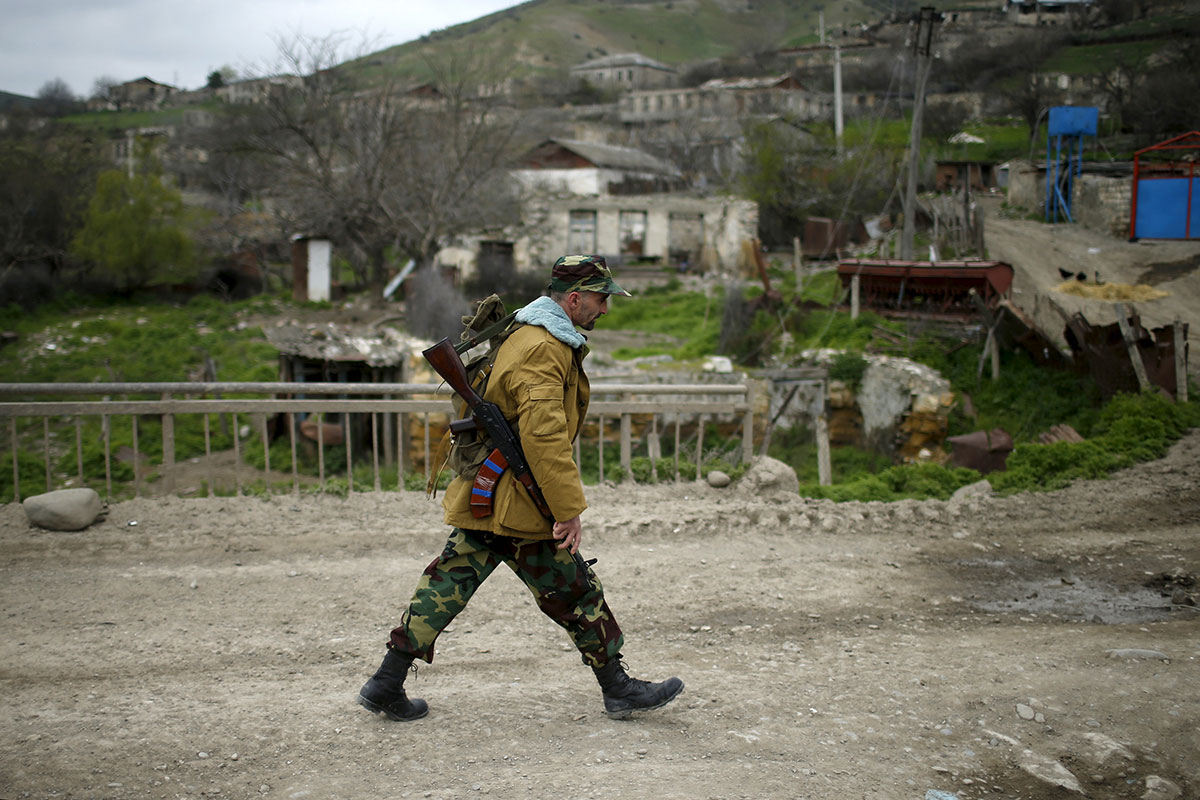Military drills, consisting of 10,000 Armenian troops, were conducted in the occupied Nagorno-Karabakh region of Azerbaijan on Monday, just three days before the Armenian Foreign Minister Zohrab Mnatsakanyan is scheduled to meet with his Azerbaijani counterpart, Elmar Mammadyarov, in Washington on June 20. Mnatsakanyan and Mammadyarov are expected to address the issue of peacefully settling a conflict between the two South Caucasus neighbors that is nearly three decades old.
Baku reacted to Monday’s events with a mix of outrage and confusion.
“Indeed, it is difficult to understand the logic of the leadership of Armenia,” Azerbaijan’s defense ministry’s spokesperson Leyla Abdullayeva said in a statement issued on Monday. “On the one hand, the Minister of Defense of this country announces the holding of military exercises with the participation of 10,000 troops in the occupied territories of Azerbaijan, and on the other hand, their Minister of Foreign Affairs is going to participate in the negotiations on a peaceful settlement of the conflict.”
“It is interesting to know whether the Armenian leadership is able to give a logical explanation for its actions,” Abdullayeva was quoted as saying. “The question to the co-chairs from Russia, the United States, and France involuntarily arises, and what next?”
The meeting in Washington will be the next round of discussions between the two countries’ foreign ministers and the three co-chairs of the OSCE Minsk Group, which has been assisting with efforts to find a peaceful settlement to the conflict over Azerbaijan's Nagorno-Karabakh region since 1992. The last time the foreign ministers met was in Moscow on April 15.
In that meeting, the two sides agreed to some practical steps to establish people-to-people contacts between Azerbaijanis and Armenians, such as reciprocal visits of media representatives. But even this small step did not amount to much, as reports of the regular breaches of the 1994 ceasefire by Armenian forces.
On May 30, a mayor of the Armed Forces of Azerbaijan Agil Omarov was shot dead by Armenian sniper fire along the Line of Contact in the Aghdam region of Azerbaijan. Aghdam, like the Nagorno-Karabakh region and its other surrounding districts, is occupied by Armenia.
Another breach of the ceasefire came on June 9, when the 19-year-old conscript Elshan Khalilov was killed. Armenia’s Defense Minister David Tonoyan later reacted by saying the soldier was killed upon his orders, and his killers were immediately awarded for their so-called valor.
Over 1,000 soldiers from the Azerbaijani army have been killed, with another 1,205 receiving wounds, between the time the ceasefire went into effect 25 years ago until May 2016, according to research conducted by the Caspian Defense Institute. The number of those who were shot dead by the Armenian military is 873, while landmines killed over 135.
These numbers are comparatively lower when it comes to the death toll Azerbaijan suffered during the war, which had its beginning in the twilight of the Soviet Union, when Armenia launched a full-fledged military campaign against Azerbaijan to seize its Nagorno-Karabakh region. According to the State Service for Mobilization and Conscription of Azerbaijan, 11,557 soldiers died during a war that lasted from 1991-1994, while over 18,000 civilians were killed.
As a result of the war, Armenia forcibly occupied 20 percent of Azerbaijan's territory, which includes the Nagorno-Karabakh region and seven adjacent districts. Armenia has not relinquished control over the occupied lands, despite four United Nations Security Council resolutions, all passed in 1993, demanding that it do so.







 Armenian sappers commenced on Monday mine-clearance operations in the territories adjacent to the Saint Mary Church in village of Voskepar (Armenia...
Armenian sappers commenced on Monday mine-clearance operations in the territories adjacent to the Saint Mary Church in village of Voskepar (Armenia...
 Iran and Pakistan have signed eight cooperation documents in various fields, and agreed to strengthen ties to fight terrorism in the region.
Iran and Pakistan have signed eight cooperation documents in various fields, and agreed to strengthen ties to fight terrorism in the region.
 President Aliyev emphasized the critical role of the North-South Transport Corridor in fostering transport cooperation between Azerbaijan and Russi...
President Aliyev emphasized the critical role of the North-South Transport Corridor in fostering transport cooperation between Azerbaijan and Russi...



